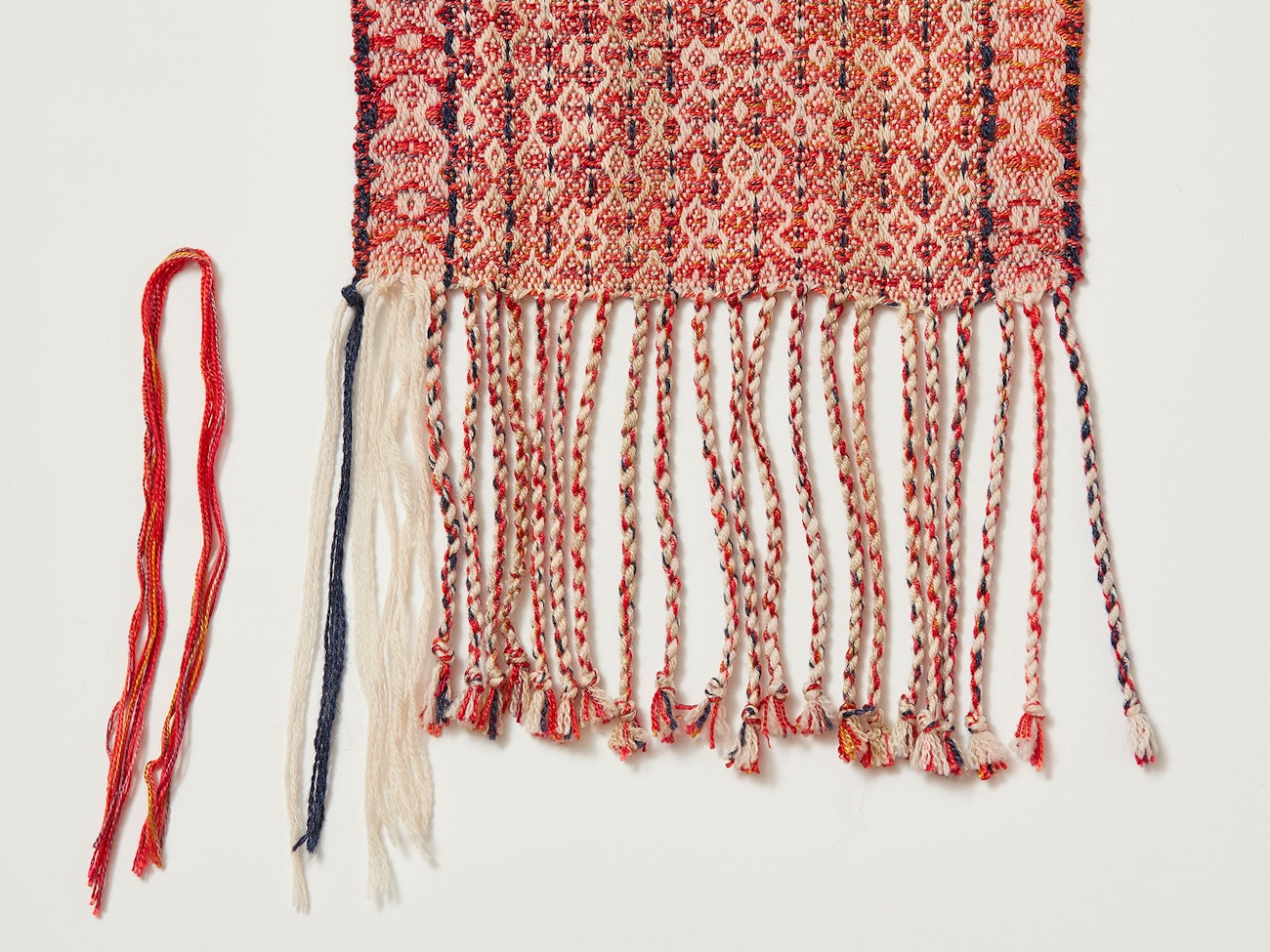I recently read a question on Facebook from a new rigid-heddle weaver asking the weaving community whether or not she should twist the fringe on her beautiful plain-weave shawl. Mostly I’m a lurker on social media, but this time I piped right up: “Yes, absolutely, you should twist the fringe.”
Here are five reasons I prefer twisted fringe to untwisted fringe on my woven wearables. Except for the first one, these reasons reflect my own personal taste—but I don’t think I’m alone in my love for this finishing touch.
1) Untwisted fringe falls apart
Simply put, the yarn in untwisted fringed ends will deteriorate over time. Yarn is made to be part of something, not to exist on its own without further manipulation. Untwisted fringe on a rarely used table runner might be fine, but any wearable should have stable fringe that won’t fall apart. Remember the phrase, “It’s going to be woven for a long time”? That fringe is going to be part of your scarf or shawl for a long time. Why not take a few minutes to make it durable?
2) The weft needs protection
Unless your project will be felted or fulled, the weft needs protection to keep it from working its way out of the warp. If you aren’t hemming the ends or twisting fringe, you must either hemstitch (a bent-nose needle makes this easier), or tie knots along the edge of your piece. Here’s another personal opinion: Overhand knots don’t look very professional. Of course, once a piece is hemstitched you don’t have to twist fringe to protect the weft, but many people like the combination of a tidy hemstitched edge with twisted fringe. I do too.

Because this scarf was woven on a mostly-white warp, its fringes would also be white. I added in strands of red weft to avoid that jarring mismatch with the scarf’s overall patterning. Photo by George Boe
3) Customizable fringe colors
If a scarf’s weft is a different color than its warp, the untwisted fringe simply looks awkward. Imagine, for example, a scarf woven with a black warp and white weft. An untwisted fringe on it would look like a big patch of black yarn running across both ends of a black-and-white patterned piece, which always looks strange to me. For situations like this, I incorporate strands of weft into twisted fringes so that they better match the rest of the piece.
4) Customizable fringe lengths
I match twisted fringe to the piece it's on. Wool blankets need thick, short fringe, so I usually cut warp ends to 6", and then prepare a 4" twisted fringe. For everyday scarves, I cut the warp ends to 7" to make 5½" twisted fringe. A fancy silk scarf usually gets a thin 6½" twisted fringe that starts out as 8" of warp ends.
Sometimes a twisted fringe will look flimsy. If this happens, simply tie in a few thrums or strands of weft into the fringe group before twisting. Just don’t go too far and make the fringe overly thick: The swing of fringe on a scarf or shawl should be dramatic.
5) More polished handwovens
In all my years of selling scarves I’ve only heard good comments about the twisted fringe on them. If you don’t currently twist the fringe on your weaving, I think you‘ll be surprised at how taking the time to do it changes the durability, professionalism, and beauty of your pieces.
If you’re ready to try twisted fringe, I recommend that you use a double-end fringe twister. This very simple tool has an ingenious design that makes twisting fringe a breeze, and it only takes about a minute to learn how to use it. In my opinion, all weavers should have and use one.
“Absolutely, you should twist the fringe.”
Weave well,
Susan
Originally published September 26, 2017; updated June 11, 2025

